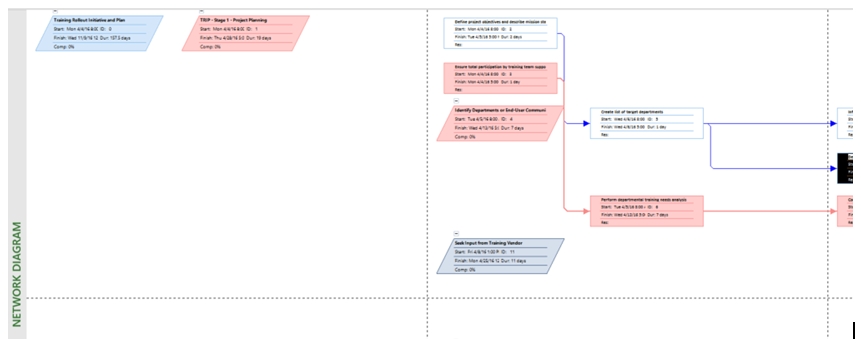Reposted from www.mpug.com

If your goal is to make certain that projects are completed on time and within budget, then understanding the “critical path” is, well, critical. According to the Project Management Institute (PMI)®’s Project Management Book of Knowledge (PMBOK) 5.0, critical path is defined as the “sequence of activities that represents the longest path through a project, which determines the shortest possible duration.” It plays an important role in project scheduling and must be constantly monitored to ensure that the project progresses as per the schedule.
The tasks that lie on the critical path are called “critical path tasks.” If any of the critical path tasks are delayed, the whole project is delayed.
Want to Learn More about Critical Path?
Learn more about the use of critical path in Microsoft Project from MPUG’s on-demand webinar, where Darrin Lange, director of operations and project management at Advaiya, presented on “Using Microsoft Project to determine where projects lie in relation to the critical path.” Watch the session on-demand.
To determine a critical path task, enter your tasks into Microsoft Project and establish the duration and predecessors. You can add buffers to account for limited resources or to cover project uncertainties. In return, Project will show you the Early Start, Early Finish, Late Start, Late Finish, Free Slack and Total Slack.
Figure 1 shows the critical tasks highlighted in yellow. In the Gantt Chart you can see the critical path task bars in orange. In this Figure we can see that the tasks 1, 3, 4, 6, 7 and 8 are critical path tasks. If any of these tasks are delayed, the whole project will be delayed. Tasks 2, 5, 9 and 10 aren’t on the critical path; delays within the total slack won’t cause the whole project to be late.

Early Start, Early Finish, Late Start and Late Finish are determined by conducting a forward pass and backward pass through the precedence diagram or workflow diagram. This shows a breakdown of the tasks you need to accomplish in order to deliver the entirety of the project. Project shows the network diagram via a task view (Figure 2) and you can add columns to show the Early Start, Early Finish, Late Start and Late Finish (Figure 3). Knowing how much a task can be delayed with the use of settings can save the project schedule and budget.


With the determination of critical path, we can also determine “float” or “slack.” Slack is the amount of time a task can be delayed without any delay in the successor activity or the project finish date. Critical path tasks can have zero or negative values for slack. Critical path tasks that have a negative value for slack are behind schedule.
We refer to slack in two ways: “Free Slack” and “Total Slack.” Free slack is the time a task can be delayed without delaying its successor task. Total Slack is the time a task can be delayed without delaying the project finish date.
Figure 4 shows Free Slack and Total Slack in Project. The tasks on the critical path have zero Free Slack and zero Total Slack. Task 2 has a Free Slack of zero days and a Total Slack of seven days. Task 2 will cause task 5, its successor, to delay after zero days but won’t delay the project finish for 142 days.

As project managers, we need to know which tasks are critical path tasks for several reasons:
- Resource managers are going to ask the PM if a resource is working on a critical path task to understand how personnel issues will affect the project.
- Executive sponsors will ask the PM if a task is on the critical path to understand tactical and strategic options.
- Team members will need to be instructed as to whether a task is on the critical path to ensure adherence to the deadlines.
- Project management office (PMO) directors will ask the PM whether a task is on the critical path during task escalation.
This general overview shows how understanding the critical path, and its key components: slack, float, early and late Start, and early and late finish, allow the PM to predict accurately what effect changes to tasks will have on the project. Knowledge of the critical path will also enable the PM to handle complicated projects better, give informed decisions to stakeholders and department heads, and ensure the likelihood of the project being successful.
This article was first published in www.mpug.com



